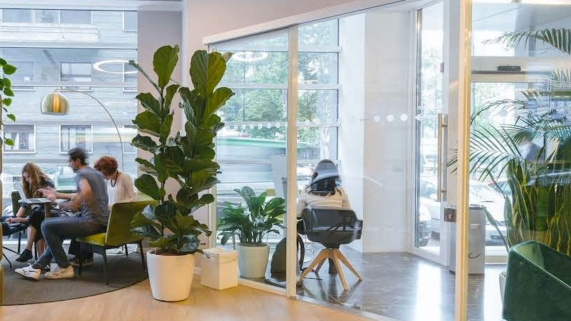For a PDF Download of this case study, click here.
BACKGROUND
A multinational information and analytics company selected AVUITY to help them:
- Understand space utilization rates within select facilities
- Determine if and where excess space existed
Both goals emphasized the need to manage rising costs of real estate while maintaining appropriate facilities for their global workforce.
PROBLEM
Prior to working with AVUITY, this organization measured space utilization using badge access data collected from the corporate security system and imported into an Integrated Workplace Management System (IWMS) for analysis. However, the misuse and abuse of badges by several employees resulted in low utilization rates and caused the IWMS data to be incomplete and inaccurate.
Furthermore, the badge system did not allow the organization to measure where employees spent their time while in the office. The organization’s leadership wanted to more accurately understand how employees moved about a space throughout the workday. Was it in conference rooms, individual desks, break rooms, etc.?
SOLUTION
After a comprehensive review of the facilities, AVUITY stationed 350 VuAI sensors across two offices in Boston. The sensors were positioned over a variety of spaces including workstations, collaboration spaces and conference room seating, enabling a detailed view of how employees utilized the space. The sensors reported if a space was occupied at any time of the day and if it was occupied, how many people were actively using the space. All data was accessed in VuSpace, AVUITY’s analytics application, thereby allowing analysts at the organization to review reports on the specific seat utilization rates by hour, week and month by space type. Where badge data simply gave an aggregate number of employees in the building, sensor data was able to provide a detailed view of exactly how the space was used.
Later, AVUITY trained members of the client’s team on the proper procedures for relocating the sensors. This has allowed the client to continuously monitor the spaces most relevant to their current questions and understand occupancy and utilization rates for their ever-changing office portfolio.
RESULTS
Armed with access to historical and real-time utilization rates of these two key offices, the facility management leaders at the client were now equipped to make an informed decision about what to do when both building leases expired simultaneously. They renewed only one lease, with the knowledge that the second location could be easily absorbed into the first without any constraint on employee space needs. The elimination of the second lease saved the organization $1.3 million annually by eliminating the 25,697 SF floor.

Solution
AVUITY is able to provide much needed space utilization data by installing sensors at entrances to bathrooms and above workstations. By deploying a line counting sensor, which anonymously counts the number of people that cross a threshold, outside of a bathroom door, data on the number of people using the restroom can be collected and sent to a central platform. This platform may be set up to send alerts to the janitorial staff when a certain number of people have entered the bathroom. It is possible to integrate these alerts with any existing facilities management system via email, push notification, or API.
Similarly, AVUITY makes it possible to view what workstations are used throughout the day by placing a sensor over these spaces. VuSpace can then create a daily report that highlights the exact areas that the cleaning team should target. If workstations need to be cleaned throughout the day, notifications can be sent to the team based on seeing usage and periods of inactivity.
Results
With the data from the sensors, we have seen our customers effectively reduce cleaning costs by 40%. They are able to decrease the number of cleaning shifts based on usage trends, renegotiate the contracts of cleaning staff, and cut back on the number of cleaners necessary due to shortened task lists. For example, a client had 15 floors with 4 restrooms on each floor, meaning there were 60 in total that needed to be cleaned throughout the day. Before the pandemic, the company had each of these cleaned 4 times a day. This required an extensive cleaning staff. After the pandemic, sensor data showed cleaning the restrooms this often was unnecessary on 13 floors due to lack of use, particularly on Mondays and Fridays. The client was able to cut cleaning of these in half on those days, and scale back to 3 times a day for the rest of the work week on all 15 floors.
Similarly, analyzing the usage trends for workstations allows for cost reduction as well. By becoming more efficient with desk usage, the data can be analyzed to determine how to best consolidate space. A report can be produced to show which desks need to be cleaned nightly. The cleaning staff is able to target only those spaces each evening, and clean the rest of the workstations only once a week. A notification can also be sent out to the cleaning staff throughout the day, alerting them when a space has been used, and when the motion stops. The staff can then clean individual workstations for the possibility of reuse. Multiple employees are thus able to use one desk in the span of a day, eliminating the number of workstations that need to be cleaned daily.
Using sensor technology provides companies with more knowledge about their office space, giving them the power to make informed decisions that will ultimately reduce costs. This may all be done while maintaining a safe and clean workplace environment that meets the expectations of employees.


